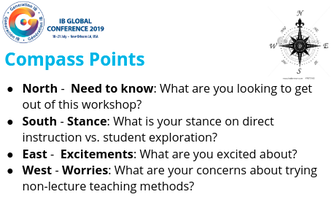 Figure 1: One version of the compass points routine Figure 1: One version of the compass points routine My colleague, Roger Winn, and I presented at the IB Global Conference held in New Orleans from July 24th - 28th, 2019. Our session had two goals: 1) to have attendees revise a current lesson that is more teacher-centered into one that is student-centered using the Cultures of Thinking framework, and 2) to have the attendees experience what it is like to be in a student-centered classroom by running our session as we run our classrooms in Michigan. We started out the session by utilizing the Compass points thinking routine, a routine included in the "Making Thinking Visible" book by Ron Ritchhart, Mark Church, and Karin Morrison (note: a second book on Visible Thinking, Making Thinking Visible 2.0, is due out soon!). If you are not familiar with the routine, the points on the compass are triggers for participants or students to think about different aspects of whatever it is that you are doing. In figure 1, the prompts for each direction of the compass are given (Note: these prompts are a bit different than what is described in the official Compass Points thinking routine description). Participants had about ten minutes to think individually and jot down thoughts on sticky notes. After this individual thinking time, we had the participants stand up, find a person that they did not know from the conference, and share their thoughts about what they wrote. This time served two purposes: 1) to give participants time to talk over their thoughts, and 2) to give Roger and I time to circulate around the room to listen to our participants. This is very common in our classrooms as well - active listening to our students. After the participants had time to talk over their thoughts from the Compass Points activity, we showed the four pillars that we use to revise a lesson: novel application, meaningful inquiry, effective communication, and perceived worth. These pillars come from the 'Opportunities' cultural force that is part of the book "Cultures of Thinking: The 8 Forces We Must Master to Truly Transform Our Schools" developed by Ron Ritchhart, Senior Research Associate for Project Zero, at Harvard University (see Ron's website here). The framework consists of 8 cultural forces that exist in every classroom, and it is the harnessing of these forces that can create a collaborative, student-centered environment. In this part of the session, Roger and I mentioned a quick blurb about each of the pillars as well as the key questions one should ask when revising a lesson with that pillar in mind, as shown in the blue box below. Novel Application: How are students applying what they already know to the task at hand? How are they applying their learning to a new context that pushes their thinking in new directions? Meaningful Inquiry: How many methods are possible to solve the problems or challenges in the lesson? To what extent am I giving the method and to what extent are students creating the method? Will all students be able to achieve the challenge? What space have I provided in the lessons for high achieving students to push their thinking? Effective Communication: How much is the teacher talking? How much are the students talking? How are the students given time to share and communicate their ideas? Perceived Worth: To what extent is this lesson connected to a larger goal or context? How have I made connections to this larger context or goal clear to the students? 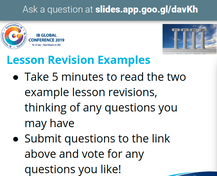 Figure 2: A Google Slide with the Q & A feature enabled Figure 2: A Google Slide with the Q & A feature enabled To give the participants an idea of how we approached this idea of lesson revision, we handed out an example of a lesson revision for math and one for chemistry. Each lesson showed the way that we previously taught the lesson, which was in a more teacher-centric classroom, and compared it to how we might teach it now after applying the guiding questions from each pillar shown above. We gave the participants some time to annotate the documents and generate questions surrounding their thinking (one item worth noting here is that in my math classroom, I wouldn't have my students annotate revised lesson plans, of course, but I do have them annotate other things, like student work, technical writing, or thinking routine notes). Then we used the Q & A feature in Google Slides to send a link to the audience so they could submit questions. If you have never used this feature, it is very worthwhile! Once you go into Q & A mode, google slides will put a link so participants can ask their question as shown in figure 2. A sampling of the questions from our participants is shown below. We then took a few minutes to address some of these questions while tabling some of them, noting to the participants that in our classrooms, we do answer some questions directly, but there are also those questions that are 'left hanging' at the end of the block, which is perfectly acceptable! The next portion of the session allowed for the participants to form a group of two or three and revise a lesson of their choosing, using blank copies of the templates discussed in the math and chemistry examples above. The participants were encouraged to find other people that they had not met to work with. This time allowed for Roger and I to circulate and join in the conversations, and to help where needed. Here are some pictures that capture this part of the session: In my opinion, listening and talking with small groups like this is the most exciting part of presenting at a conference, and is the most exciting part of a classroom! Take a look at one of the conversations I had with one of the groups: Participant 1: "How does homework look when running a math classroom like this?" Jeff: "I like to call it home thinking - it takes the stigma away." Participant 2: "Home thinking - I like that. I'm going to use that." Jeff: "So, to answer your question, the home thinking is directly related to what the thinking was in class for that particular day. It could be a desmos activity, an annotation of another student's thinking, a partner thinking activity where they have to collaborate and solve problems together before the next class, or, it could be a set of problems that they have to practice. It all depends." Participant 3: "It's not just drill and kill everyday then?" Jeff: "No - far from it. Drill and kill is needed at times, but not everyday, and not just because of the old adage 'well that's how we have always done it.' I try to give home thinking that makes the students think as critically outside of class as they do inside of class." Participant 1: "So the planning for this type of classroom really revolves around the students and where they are at, and not necessarily a lecture where you finish talking with one minute to go and you say 'okay, we've covered it.' " Jeff: "Correct - although you do have to have guidelines and general time frames in mind. This is where the real 'art' of teaching comes in to play - how much time is spent here? how much do I talk? how much do the students talk? what are the students actually doing? are they passively receiving information, or fully engaged. This is why I think 'section teaching' in math doesn't work well in a student-centered classroom." Participant 2: "It seems like a large shift, and one that could take considerable time." Jeff: "It is a large shift, but just start small. Change a few small things in the classroom, and see how it goes, and then expand from there!"
Our final part of the session was to have the participants utilize the I used to think....now I think visible thinking routine. The participants were asked to write down what they used to think about student-centered learning, and what they think now about student-centered learning after their time with us. Here is a sample of responses: As Roger and I reflected on our session, as we currently do with our lessons, of course there were tweaks that we would like to make, but for the most part we met the two main goals outlined earlier: to have participants revise a lesson and to experience a student-centered classroom!
If you would like Roger Winn and Jeff Watson to run a session on student-centered learning at your school or district, please contact us at [email protected] or [email protected].
0 Comments
|
Archives
February 2021
Categories
All
AuthorJeff Watson is a Math teacher at the University Liggett School in Grosse Pointe Woods, MI. His work as a software engineer made him realize the need for problem solvers and critical thinkers in the workplace today. Jeff believes that the secondary math classroom should be a place of critical thinking, collaborative learning, and exploration which will cultivate the problem solvers and thinkers needed today. |

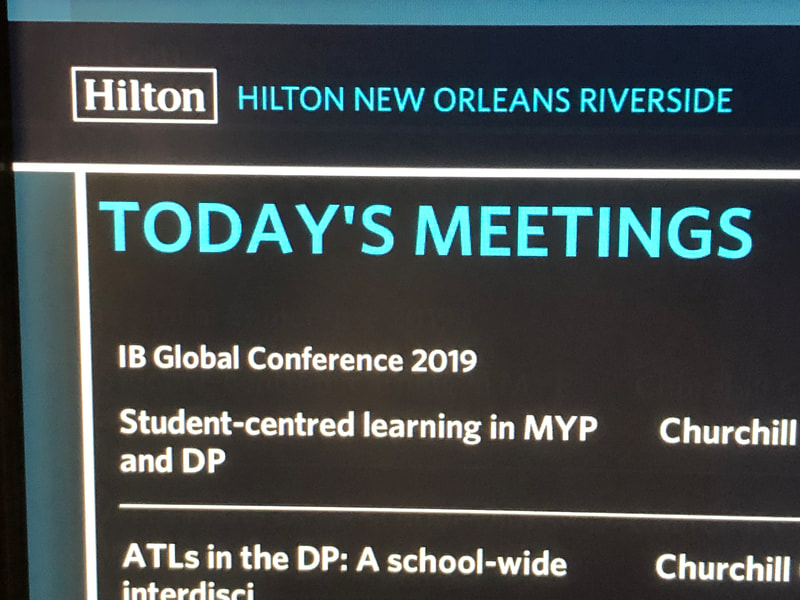

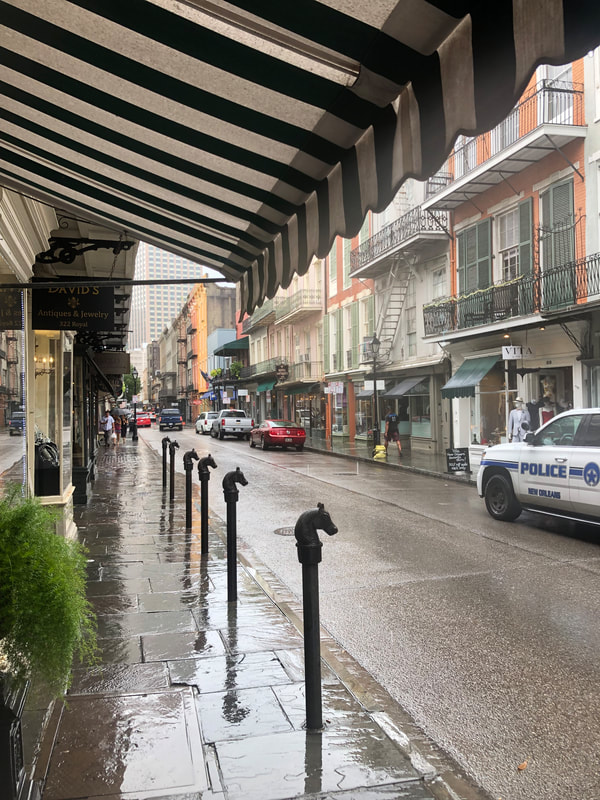

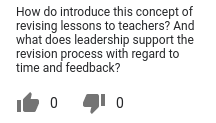

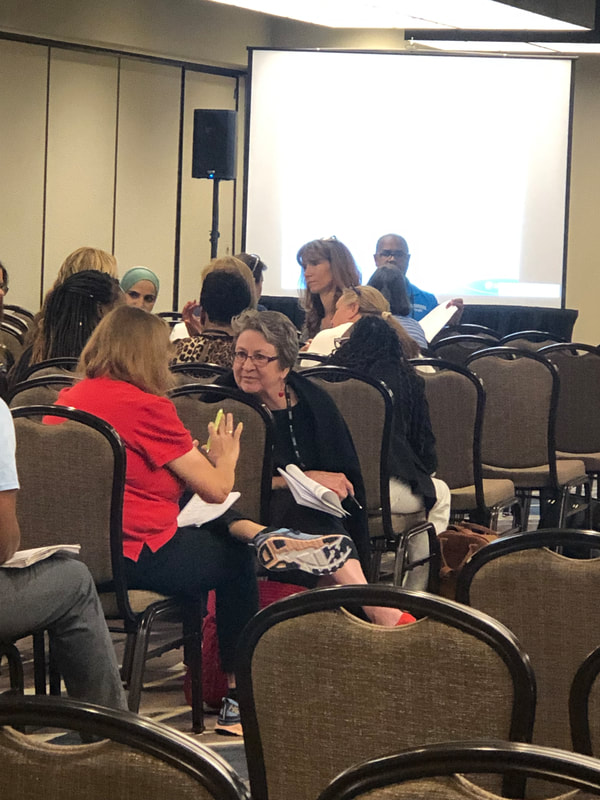
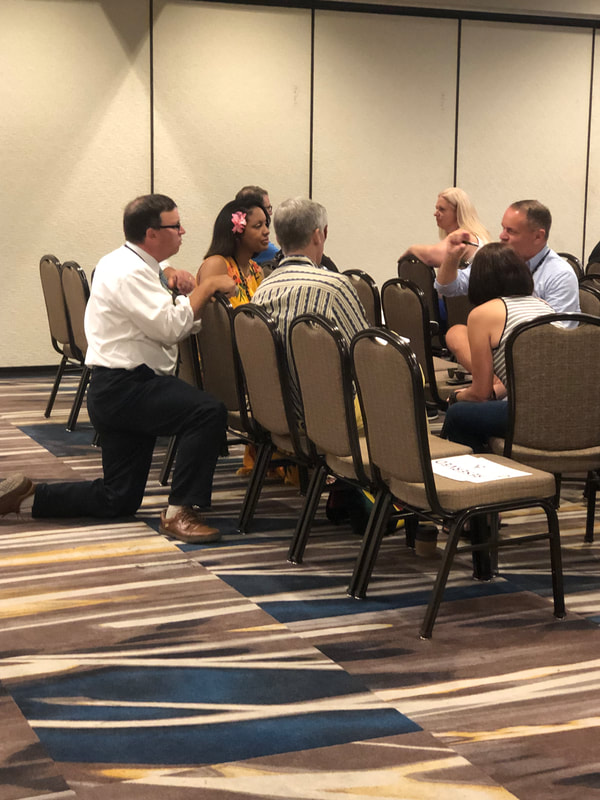
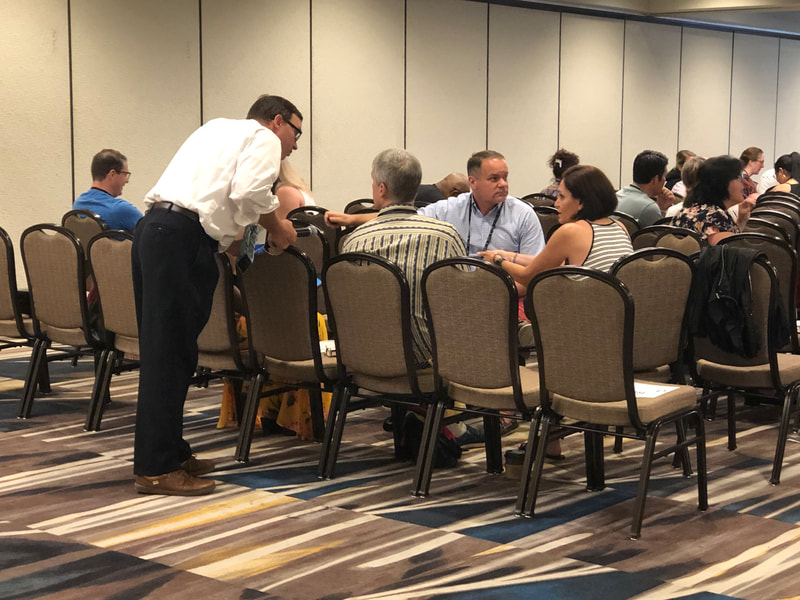
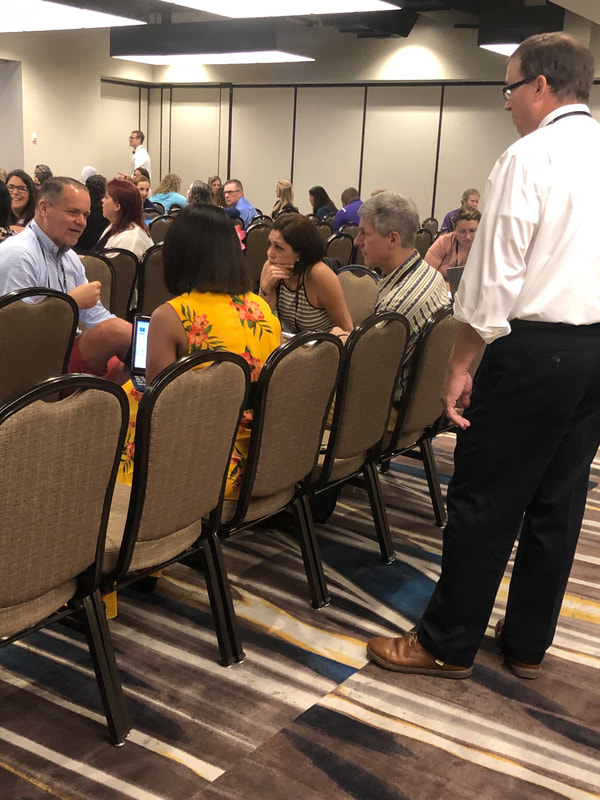
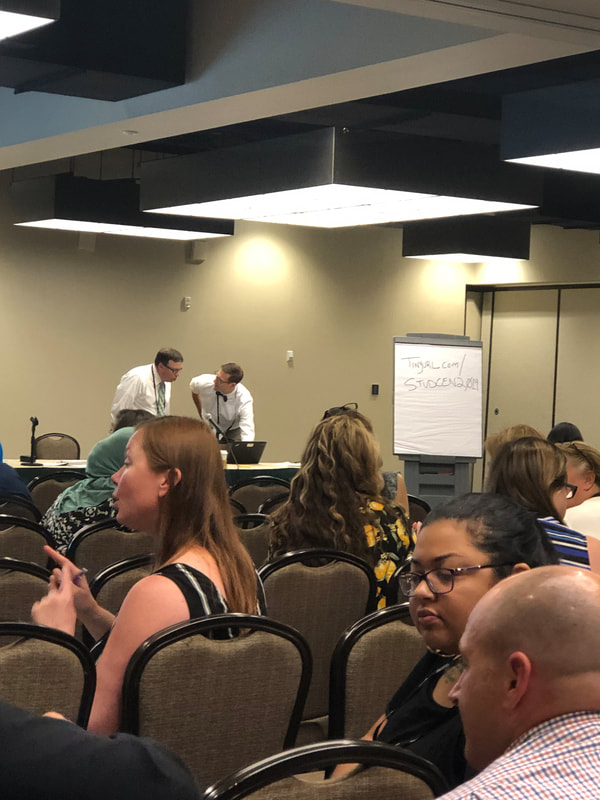
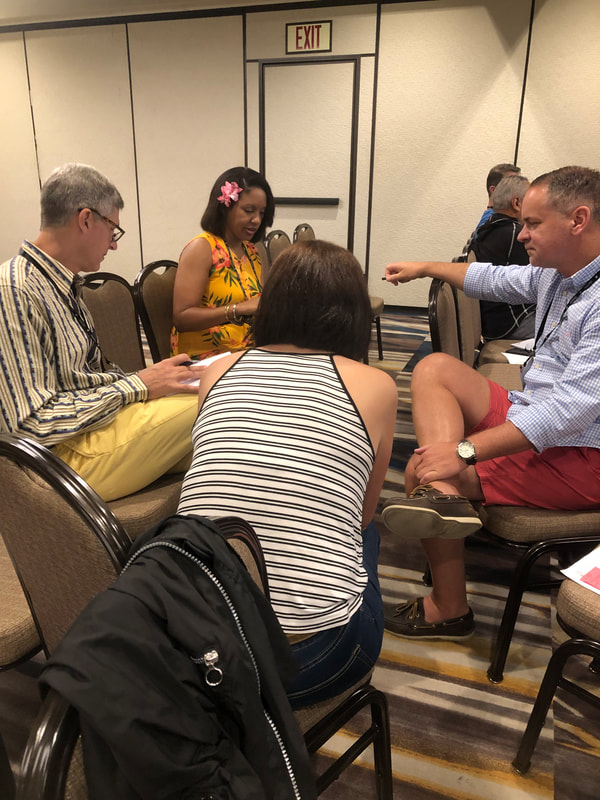
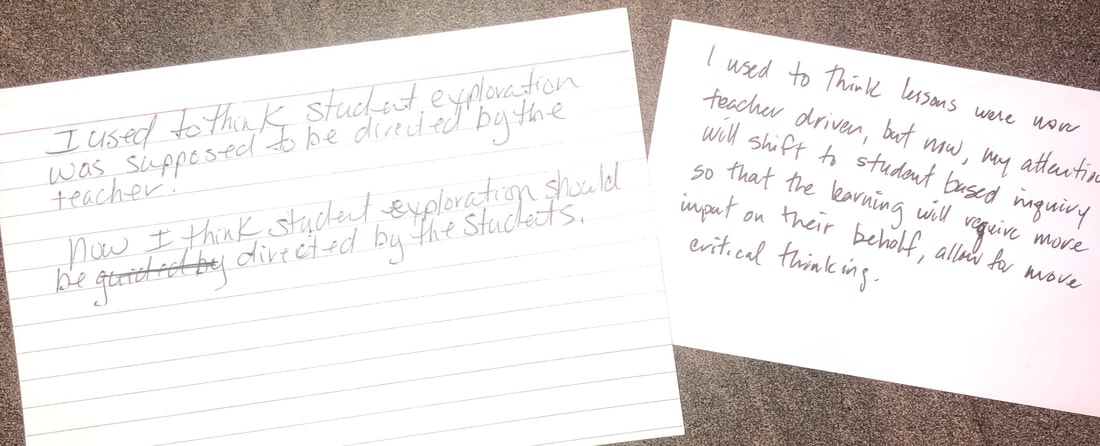
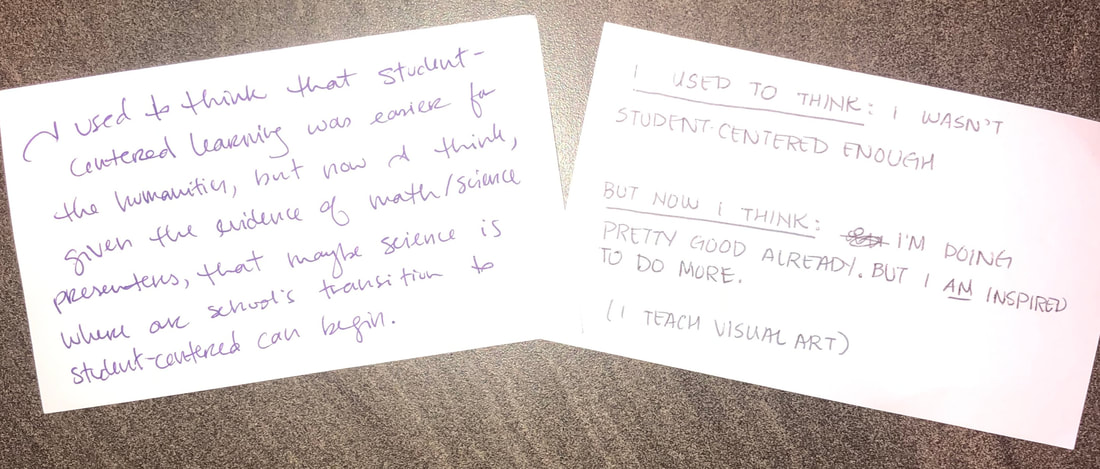
 RSS Feed
RSS Feed
